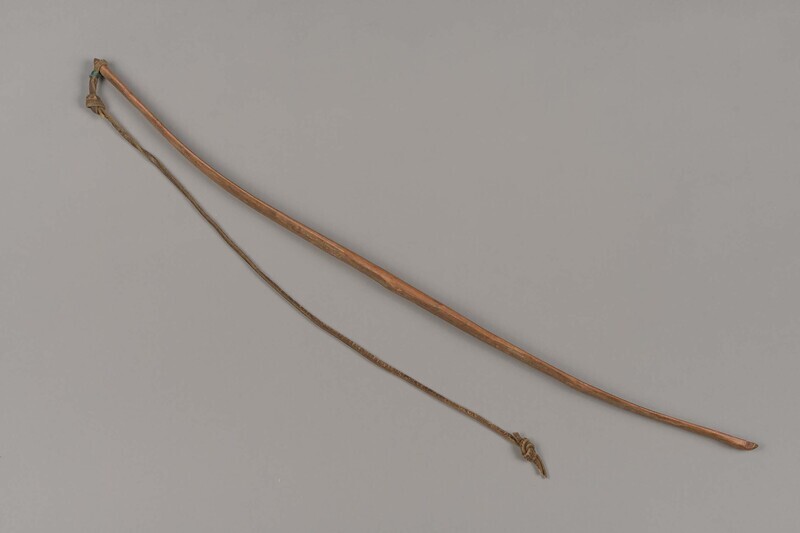hunting bow Item Number: HV980.2.132 from the Burnaby Village Museum

Description
Small maple hunting bow. A leather thong is tied to one end of the bow. It is loose at the other end, although, there is a knot that could slip over the bow. There are traces of green paint on the wood.
Interior Salish: Nlaka’pamux: Spuzzum First Nation
Object History
Homer Barnett writes about Coast Salish bows: “the main hunting bow did not differ from the one used in fighting. It was made of yellow cedar root when this wood could be obtained from the mountains. The trunk wood was also used. An alternative was yew. Inferior bows for ducks and other birds were made from hardhack. Bows were about three or four feet long/ The were rather flat and were about the breadth of three fingers at the widest parts on either side of the grip, which was constricted and slightly thicker. They tapered from the centre towards both ends. The ends were curved away from the holder for a better string purchase (1955:100)Plant fibres were seldom made into bow strings. More common were two-ply cords of sinew or gut. Atypically, a skin thong was used (1955:101).
Marks & Labels
There is writing inscribed on the inside of the bow, which reads: “1925" "Made for me by Spuzzum chief.”
Item History
- Made in Spuzzum, British Columbia, Canada
What
- Name
- hunting bow
- Identification Number
- HV980.2.132
- Type of Item
- hunting bow
Who
- Culture
- Nlaka'pamux
Where
- Holding Institution
- Burnaby Village Museum
- Made in
- Spuzzum, British Columbia, Canada